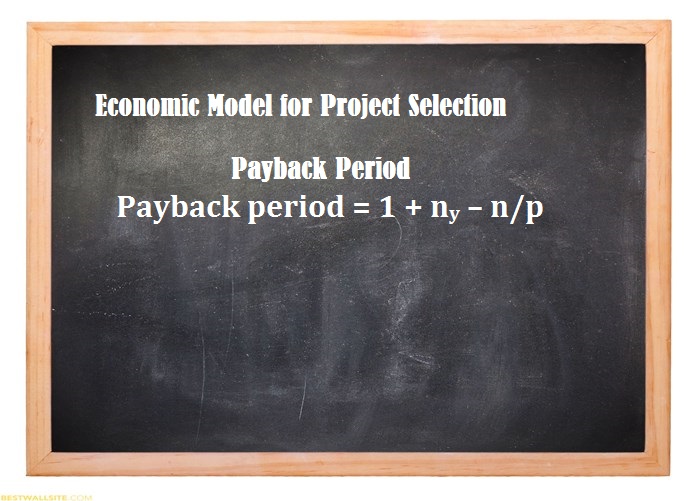Payback period is yet another economic model for project selection. Payback period refers to the number of time periods that a project requires to recover your investment. When you have recovered the project investment, it is known as the break even point. At this point, the project is neither at profit nor at loss. After you have recovered the investment, the revenue generated from the project contributes to the profits from the project.
Payback period is usually calculated in years. For example, if you have invested $ 5,000 in a project and the project generates revenue of $ 2,000 in the second year and $ 3,000 in the third year, then the payback period of the project is three years.

Practically, it is not always that a project generates revenue adds exactly equal to the investments made. The amount of revenue that project generates over the year usually varies. In such a case, you calculate the payback period of the project as the year when the difference between the cumulative revenue and investment is a positive value.
For example, consider a project in which you have invested $ 10,000 in a project and the project generates revenue of $ 1,000 in the first year, $ 3,000 in the second year, $ 3,000 in the third year, $ 4,000 in the fourth year, and $5,000 in the fifth year. In this project, notice that project starts returning positive value after four years (1,000 + 3,000 + 3,000 + 4,000 – 10,000). Therefore, the payback period for the project is four years.
It is easier to calculate the payback period when you already know the revenue returns. However, you need to calculate payback period even before you have selected the project. Based on the payback period, you evaluate if the project is even worth considering. Therefore, to calculate the payback period, you consider the estimated values for annual revenue generation from the project and use the following formula:
Payback period = 1 + ny – n/p
Here:
- n is the value of the cumulative revenue generated when the last negative value is expected.
- ny is the number of years after the initial investment when the last negative value is expected.
- p is the value of revenue when the first positive value of the cumulative revenue is expected.
The payback period method provides you a bird’s eye view of the risk analysis about the time period for which the initial investment is at risk. You use this method to identify and select a project that provides you rapid returns with respect to the initial investment. Even though this is one of the simplest economic methods you can use to select a project, it has its share of disadvantages, such as:
- It does not consider a possibility of additional investment at a later stage, which might be required in the project life span.
- It is more concerned about the payback period and not about the overall profitability of the project.
- It does not consider the time value money concept where revenue generated at a later stage is worth less than the revenue earned in the current time period.
- The denominator of the formula is based on average revenue from the project over multiple years. If the estimated revenue is generated at a later part of the project life cycle, the calculation incorrectly indicates an early payback period.
